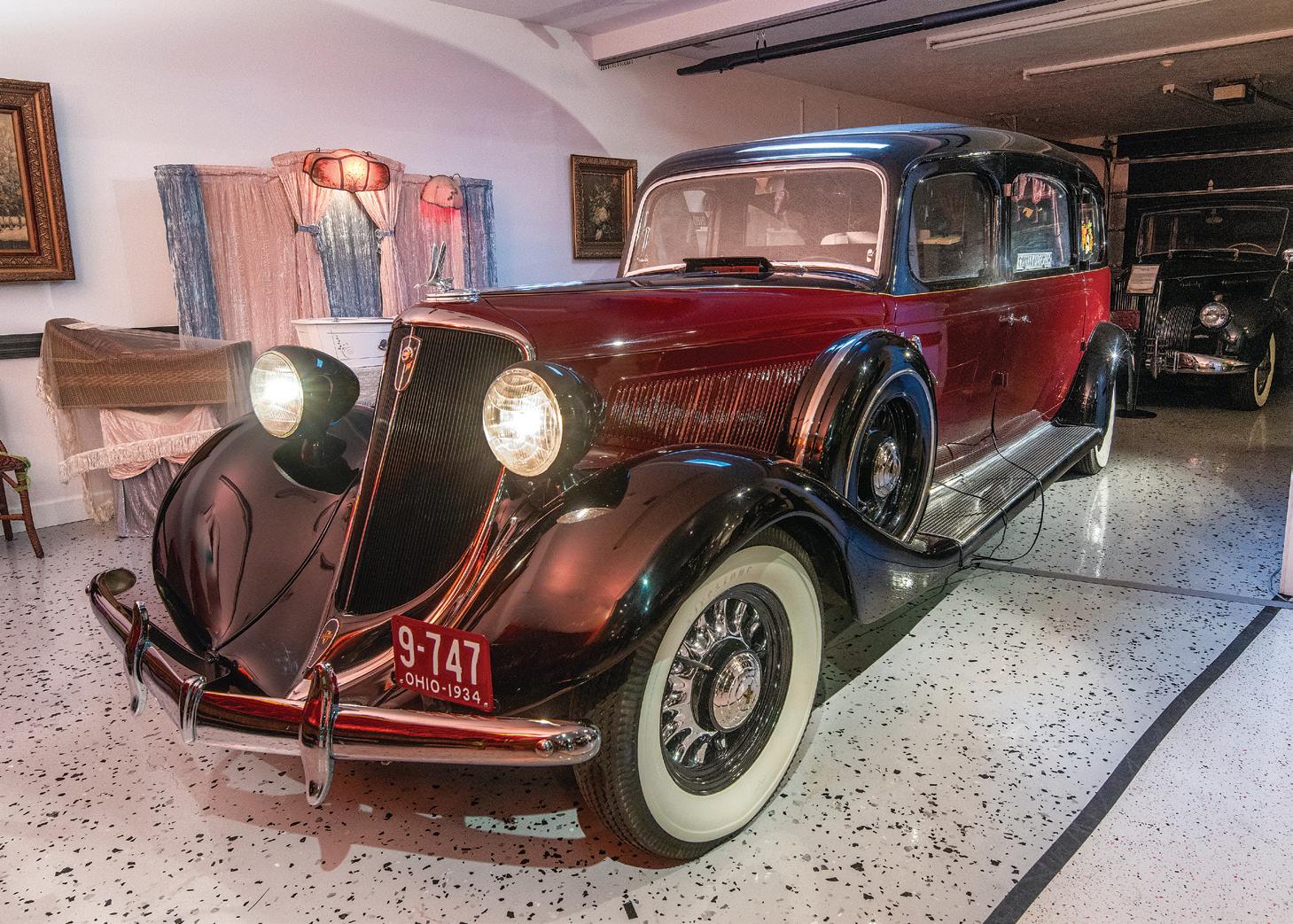
2 minute read
Marietta, p. 34
Peoples Mortuary Museum
Bill Peoples’ museum showcases the history of funeral directing and our cultural traditions surrounding how we mourn the dead.
Visitors first enter a small room containing several decades-old black and white photographs depicting family funerals. Each serves as a window into the past and sets the proper tone for the serious, yet insightful, collection Bill Peoples has assembled just across the parking lot from his Cawley & Peoples Funeral Home in Marietta.
Peoples has been a licensed funeral director since 1971, and during that time he has accumulated items that showcase the business of funeral directing and how it evolved from the 1850s to the mid-1950s. He opened Peoples Mortuary Museum in the small garage adjacent to his business in 2005, when he realized his collection had become too extensive to merely keep in storage.
“It’s very rewarding to be able to share our history with other folks,” says Peoples, who secured the items from industry peers throughout the Midwest. “Funeral homes were notorious for never throwing anything away.”
The collection includes items ranging from antique jewelry with lockets of hair that were once worn during the mourning period to embalming equipment, including a table and portable setup that was used during the time when the practice was done in a person’s home. The hundreds of pieces highlight important parts of the mourning process and serve as a tribute to the history of funeral directing.
One of many fascinating items in the collection is an icebox coffin, which was traditionally used for viewings when a person died of an infectious disease. To prevent the spread of any contagions, the body would be surrounded by ice to cool it down, and a viewing window protected others from contracting the illness.
There are several vintage funeral automobiles on display as well, such as 1938 and 1940 Packards, a 1927 Henney and a 1934 Studebaker that Peoples still uses for funerals today. The museum also has three horse-drawn hearses dating back to the late 19th and early 20th centuries.
Peoples offers guided tours of his museum by appointment free of charge, although donations are welcome. His goal is to highlight the significance and importance of the traditions related to how we say a final goodbye to those close to us.
“It’s part of living,” Peoples says. “It’s a matter of how to cleanse your mind ... move on with your life and get on with the important things with all the living people around you.” — Erin Finan
408 Front St., Marietta 45750, 740/373-1111, cawleyandpeoples.com
















